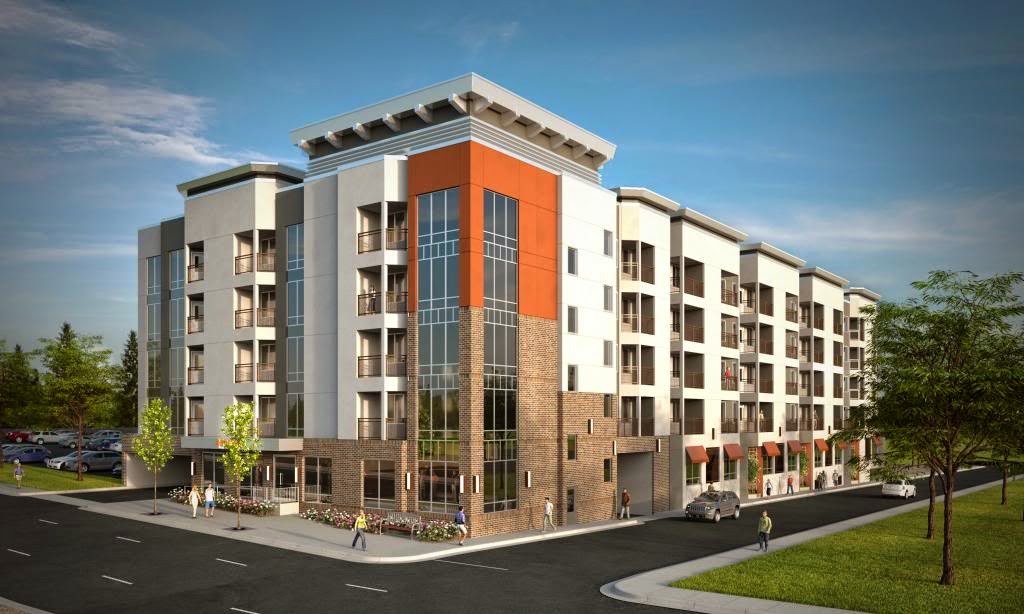Every
person desires to have a house of his/her own according to his or her financial
position. It is the emotional bondage towards the house that over weighs than
the concrete structure of the house. Normally, a person invests money to
acquire immovable property either once or twice. Therefore, the purchaser has
to put forth a lot of efforts to get the immovable property with good, clear
and marketable title. When once a property in a good locality with marketable
title is purchased, he can live peacefully and comfortably in the said
property.
Before
acquiring any property, more impetus should be on the location since it plays a
paramount role in almost all aspects of the real estate. However, the process
of identifying the location for owning any property depends upon the purpose
for which such person intends to invest, which could be either for residential
or commercial, since the priorities differ according to the purpose for which
the property is intended to be purchased. Selecting a property situated at a
convenient and suitable location will result in appreciation of its value and
this in turn satisfies you, for having invested in a profitable property.
The
location of the property depends upon the purpose for which the property is
purchased. In case the property is purchased for self-occupation, a residential
locality not far away from the heart of the city is preferable and in case the
property is purchased for commercial purpose, it is very important that the
property is to be situated in a place which is easily accessible to the public.
One should not yield to the pressure created for purchasing a property at a
cheaper price. Instead, one should ensure proper verification and examination
of documents with extraordinary care. It is advisable to select properties situated in the layouts approved by the competent authorities, which, in turn
would enable you to avail all the facilities within the layout. It is also
important that the area should have basic facilities and civic amenities to
ensure better enjoyment of the property. The infrastructure facilities should
be good in all respects. That apart, the size of the plot to suit your pocket
and the permitted FAR (Floor Area Ratio) are necessarily to be considered.
The
first and foremost thing that should be kept in mind at the time of identifying
the property is that the property intended to be purchased should not be
located within the close vicinity of a slum area or place of worship or of a
drainage line.
•
Generally, persons prefer to spend more time in their residences for rest,
sleep and family interactions after they return from work. The location for
residence should be free from air pollution and noise pollution. Good
environments including natural light and good ventilation will be an added
advantage from the health point of view. Added to this, an area inhabited by
decent, educated and cultured people would be a gifted advantage.
•
Civic amenities like park, school, police station, temples, community hall,
hospitals, auditorium, should be available in the locality. Better road
facilities will save more time to reach the place of work in time, though the
location of the residence is little away. Apart from the above, it is also
necessary that banking facility, ATMs, public conveyance, public telephone
booths, Internet Centers and others are available within the vicinity of the
property.
•
Availability of water supply, power supply, ground water and sanitary line
should be ensured and in case of bore-wells, then good ground water table is
also necessary.
It
is always good to purchase an apartment built in a layout approved by the
competent authority, since it would ensure better amenities to occupants. The
location must also be free of any kind of pollution or congestion. If the
person wants to own a house or a flat for self occupation, it is advisable to
prefer a purely residential area than a commercial one. It is also important
that such layout should also comprise of well-laid roads with good sewerage
system, along with regular garbage clearance. Care should also be taken to
ensure that the location is not very far from the Work Place, Market Place,
Educational Institutions, Hospitals, Bus Stand, Railway Station or other basic
and important destinations.
For
maintaining good health, it is necessary to inculcate the habit of jogging or
walking regularly, for which Public Parks or Gardens with jogging track is
necessary. Therefore, it is preferable to own a house or a flat wherein such
parks or gardens are easily accessible. One thing that always concerns everyone
is the parking of vehicle and other logistic issues, which we should ascertain
before purchase.
Now,
coming to the people residing in the vicinity, emphasis should be on an area
inhabited by decent, educated and cultured people with a cosmopolitan outlook,
which plays a major role in the personality development of an individual. One
has to ensure that the area is not housed with antisocial elements who create
social disharmony. In order to avoid noise pollution, it is necessary to verify
whether any factory or workshop especially, the ones which work in night-shifts
are situated in the immediate neighborhood. To ensure good sleep and less
pollution, pick up an area, which is free from any factory or workshop
(especially night working) in the precincts of your location. Further, the
property located close to highways or heavy traffic areas are better avoided.
Another
important factor to be considered at the time of choosing a property is
regarding the resale value. This naturally depends upon the location again. A developing
area is preferable than a developed area, since the market value in the
developing area is comparatively low and value appreciation is more.
Non-availability
of parking space and traffic congestion will have a negative impact on the value of the property. Accessibility to the railway/bus stations, airport,
star hotels and availability of infrastructural facilities play an important
role. The residential area should not be located on the main roads, highways,
heavy traffic flow. It should not be near the area of high tension wire. It
should be preferably away from the railway line to avoid noise, away from
burial ground or cremation center. Besides, the location should not be in any
low lying area to avoid water logging and inundation of water in case of
torrential rains etc. Also, it should be away from lakes, water tanks, main
drains and sewage water storing areas. The land should not be filled up with
clay soil and not prone to land-sliding.
The
concept of Vaastu plays an emotional role and solely depends upon the
individual's belief and preference. Belief in Vaastu concept varies from person
to person. It is seen that the concept of Vaastu has gained much momentum now a
days. It is better to select an immovable property conforming to the Vaastushastra which may yield good value upon resale. Equally important is the
selection of a rectangle or square site and direction wise, it is better to
select North and East, as generally people do so. It is suggested that instead
of banking upon the Vaastu alone importance may be given to the size of the
plot and the Floor Area Ratio along with the price tag.
The
property scene is similar to that of speculative industry; prices can either
appreciate or depreciate, though the
latter is rare. In fact, it is the difference in the amount of gain in value
and the time taken to achieve such appreciation in value which is important.
Slow and poor appreciation in value would be almost equal to depreciation while
fast and large appreciation can give benefits like any other investment and
that too without any effort on the part of the investor. A thorough study of
title, location, developments already in the area, the expected development in
the area, other facilities already in place and surrounding places and a
careful analysis of these factors before purchase can ensure great benefits and
greater peace and prosperity to the purchaser.
In
the sky-rocketing real estate price both in urban and suburban areas and
mushroom growth of apartment culture in and around cities which are being sold
at exorbitant price, nowadays, a person may not be able to purchase a good
property at a reasonable rate. It is always advisable to select a property to
suit his budget, otherwise he will face a lot of problems and the income will
go to repayment of the principal and the interest only. Nowadays, Bank
finance/loan is easily available for long term i.e., 15 to 20 years subject to
fulfilling their terms and conditions. Instead of purchasing 30 x 40' sitewith
Ground + 2 upper floors, a person can purchase 60 ' x 40' site and construct
only ground floor with further provisions to construct additional floors
suiting to their requirement and budget at later stage.
Instead
of purchasing an immovable property in an isolated area, it is better to
select it in an area having good road facility and public transport system
which would be convenient for up and down traveling to work spot and back home
and also helpful for the school going children. If you purchase a property in
an isolated area, you are likely to encounter a lot of unforeseen problems.
Conveyance
of marketable title in favour of the intending purchaser is also one of the
pivotal requirements which decide title of the purchaser over the property.
Thus, while selecting a vendor/promoter, you need to undergo thorough
investigation about the history of the Vendor or the Promoter and the title
over the property. This can be done by scrutinising and verifying origin to
trace the title, flow of title and the present status. In the case of Promoter,
apart from the above, enquiry should also be made about the earlier projects
undertaken by him.
Presently,
the Real Estate is booming due to various factors viz. IT Boom, High salaried
people, soaring share prices and the easy availability wide range of home
loans. The Builders/promoters are having a field day, as the demand for
properties is mounting. That being the situation, it is very important to opt
for the purchase of a flat/apartment constructed by reputed Builders, because
some builders, having no experience in the field of construction may take undue
advantage of the mounting demand and may cause damage to the intending
purchasers by making false assurance, with poor result and high prices. We hear
a lot of stories about such bogus builders, whose motto is to cheat the people,
collect the money and disappear with such money. At the outset, before making
any kind of investment either in apartments or plots or in any type of
property, it is very necessary to obtain the list of reputed builders who are
involved in the real estate business from quite few years. Once such list is
available, then it is necessary to make a thorough investigation about the
antecedents of the short listed builders. Invest your hard earned money in
projects promoted by renowned developers having proven track record. Do not
believe the words in the advertisement 'Financial Institutions approved Projects'
Purchasing
a property is time-consuming process involving various factors discussed above.
Do not simply believe in a Developer's project presented in a colorful brochure
with glossy photographs and pictures with a lot of promises to be undertaken.
It is advisable that before investing your money in flats or in an independent
house property, choose a well known builder/developer/promoter and in cases
where vendor is an individual, ascertain genuineness of the ownership.
Thoroughly check up the track record of the developers and verify successful
completion of their earlier projects. Investing in an independent house or flat
built by any unknown builder is always a risky act. Before booking a flat, it
is necessary to verify the track record of the builder for prompt delivery,
construction standards, adhering to the agreed cost without escalation,
providing basic amenities. Ensure that the construction is carried out in
compliance with the municipal laws without any deviations from the approved
plan and also check the post sales service.
Do
not depend upon the Developer's legal opinion obtained from their Advocates and
you have to check up documents through your own Advocate.
It
is advisable to try and meet the residents residing in the apartments
constructed by such Builder.
If
an offer to sell a flat/apartment is made for the price which is much lower
than the prices prevailing in the market, then it is advisable to think it over
than being carried away by the throw away price offer as such purchases may
encounter some unknown problems.
Any
document substantiating the claims of having obtained BDA's no objection
certificate or approval from the competent authority should be considered only
after verification of the genuineness of such documents.
Buying
a property with unclear title is like 'paying the money and buying headache'.
Generally, owner of property with unclear title, either himself or through his
agents/brokers offer the property at cheap rate and pester upon the prospective
purchaser to buy his property at short notice. It is not advisable to purchase
any property in an hurried manner. It is always better to subject all the
documents to rigorous scrutiny, verification and seeking
expert's opinion to ensure marketable title of the immovable property.
In the process, proper and reasonable time need to be given for legal scrutiny
and opinion. Upon such advice by Advocates, further efforts should be made to
verify various records in the concerned Government Departments
The
origin of property, continuous flow of the title and present status of the
property should be thoroughly checked.
Services of an Advocate who is having specialized knowledge and practical
experience in the property matters should be utlised. It is advisable to check
up history of the property at least for the past 50 years. It is also important
to find out existence of minor claims, court litigations, Government
acquisition proceeding, Zonal regulations and other subsisting charges on the
property.
Before
entering into an agreement, the purchaser has to verify all the original documents pertaining to the title deed personally to make sure that immovable property
is free from mortgage by deposit of title deeds and other charges created
thereon. The deposit of title deed will not be reflected in the Encumbrance
certificate.
The
purchaser should act according to the advice given by an experienced Advocate.
If an Advocate insists on issue of Paper notification in a leading local News
paper, the purchaser can do so. However, the Paper notification cannot
guarantee any title over the property. If anyone has any objection to the sale
transaction, such claims or objections will come to light before sale
transaction which may render a great help in taking further decisions. It is
the duty of the vendor of a property to settle such claims or objections if any
before sale.
Further,
a purchaser should make discrete inquiries and verify from the inhabitants ofthat location and also neighbours about ownership of the property to be
purchased. Apart from verification of the main title deeds, scrutiny and
verification of the supporting documents like revenue records and other
sanctioned plan/licenses etc., would help in ascertaining title of the
property.
As
far as residential property is concerned, it is safe to invest in those
projects which are completed rather than those which are still
under-construction.
For
those who intend to invest on the property other than residential, for getting
steady rental incomes, investment on the ready to occupy properties may be a
wise choice. Also, the possibility of capital appreciation would be very great
as ready possession property attracts premium market rates. Thus, purchasing an
immovable property free from any kind of impediments is a time-consuming
affair and it requires selection and involvement of professionals such as
Advocate, Architect, Structural Civil Engineers, Contractors and Real Estate
Agents.
1. Scrutinise the documents with an experienced Advocate. Ensure that the
documents of title of the property you intend to purchase are clear. Defective
title will create problems at any point of time.
2.
Always go for a property, which has
a resale value.
3. Ensure that the building has been
constructed as per the sanctioned plan and if there are deviations they should
be within the permissible limit. The property should not be in a low-lying
area.
4. You may always rope in the services of a
reputed real estate agent and fix his commission well in advance.
6. If you prefer a ready-to-occupy flat,
select a flat which is off the main road on a wide street with adequate water
supply, away from cinema hall, marriage hall, open drain, factories and place
of worship but not very far from school, college, commercial complex, temple
and hospital.
7. If you buy a Flat/Building under
construction, visit the work site regularly and see the progress of work.
8. You may not be a Vaastu believer, but
purchase House or Flat or land that is Vaastu-friendly from resale point of
view.
9. If anyone offers flats/sites at a cheaper
rate than the prevailing market rate, there may be certain hidden problems. So
you should be extra careful in finalising the deal of such a property.
10. Ensure that the developer has Clearance
Certificates from government departments, viz., Electricity Board, Water and
Sewerage Board, etc..
12. Check up the genuineness of the documents with the concerned authorities in
person.
14. In case of flat purchase, specification of the building, including material
used, difference between the carpet area and the super built-up area are the
important factors to decide the rate. Other facilities like Club House,
Swimming Pool etc., will also have to be considered.
15. Check up whether there is adequate water
supply and sanitary line facility.
16. In case of GPA transaction ensure
the validity of GPA.




